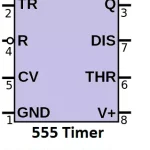Asbestos has a long history of use in various industries, including the automotive sector, where its heat-resistant properties made it an ideal material for components that endure high temperatures. Its use was particularly prevalent in brakes, where asbestos in brake pads served to prevent fires caused by friction and heat. Understanding the extent and nature of asbestos use in automotive parts can help contextualize its risks and the ongoing efforts to find safer alternatives.
Brake Pads and Linings
Asbestos was commonly used to manufacture brake pads and linings because of its ability to resist heat and absorb sound. The high friction in braking systems generates substantial heat, which asbestos could withstand without degrading. This made brakes more durable and less noisy, a significant advantage for vehicle performance and driver comfort.
However, the downside was the release of asbestos fibers during brake and clutch operations. Every time brakes are applied, tiny asbestos fibers could be released into the air, posing health risks to mechanics and anyone else exposed. This has led to strict regulations and the eventual phasing out of asbestos in these parts.
Clutch Facings
Like brake pads, clutch facings incorporate asbestos for durability and heat resistance. Clutches experience significant mechanical wear and thermal degradation; asbestos’s has helped mitigate these issues. Its use ensured that clutch facings could handle the frictional heat without breaking down, prolonging the lifespan of the clutch system.
The problem arose during the maintenance or replacement of these clutch systems. Handling worn-out asbestos-containing clutch parts could release harmful fibers into the environment, endangering the health of automotive technicians and workers involved in manufacturing.
Gaskets
Asbestos was used to produce engine gaskets due to its ability to withstand high temperatures and chemical resistance. Gaskets are crucial for sealing engine components to prevent fluids or gasses from leaking, and asbestos’s effectively met these requirements without deteriorating under engine conditions.
The removal or deterioration of these gaskets, however, could lead to the exposure of asbestos fibers. Over time, the degradation of these parts necessitates replacement or maintenance, during which asbestos’s can become airborne and pose inhalation risks.
Hood Liners and Heat Shields
Under the hood, asbestos was often used in liners and heat shields to protect the car and its components from heat damage. These parts are exposed to extreme temperatures from the engine and exhaust systems, and asbestos’s helps insulate these components effectively.
While effective in heat protection, the brittle nature of aged asbestos parts means they can easily crumble and release fibers during repair or replacement activities. This aspect of asbestos’s use has necessitated careful handling and proper safety equipment to protect workers from exposure.
Exhaust Components
Asbestos was also used in older exhaust systems, where it insulated the exhaust components to help control temperatures and prevent heat-related damage to both the vehicle and the external environment. This use is less well known but was crucial for older vehicle models that lacked modern heat management technologies.
Like other asbestos-containing automotive parts, maintenance or repair work on these exhaust systems could disturb the asbestos’s, releasing fibers into the air. This potential for exposure made it crucial for mechanics to use protective gear and follow safety protocols when working with older vehicles.
The historical use of asbestos in automotive parts shows a reliance on its beneficial properties, counterbalanced by significant health risks. Today, the industry has largely moved away from asbestos’s to safer alternatives. However, understanding these historical applications is crucial for addressing the lingering health risks of older vehicles still in use.







